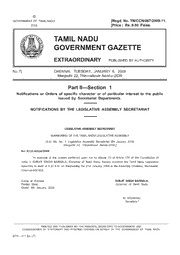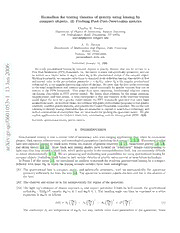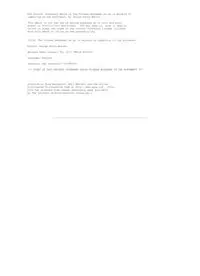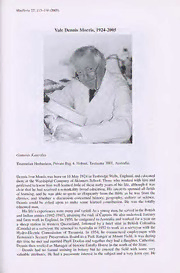
Preview Vale Dennis Morris, 1924—2005
Muelleria 22: 113-118 (2005) Vale Dennis Morris, 1924-2005 Gintciras Kantvilas Tasmanian Herbarium, Private Bag 4, Hobart, Tasmania 7001, Australia. Dennis Ivor Morris was born on 16 May 1924 in Tunbridge Wells, England, and educated there at the Worshipful Company of Skinners School. Those who worked with him and professed to know him well learned little ot these early years ot his life, although it was clear that he had received a remarkably broad education. His interests spanned all lields of learning, and he was able to quote as eloquently from the Bible as lie was irom the classics, and whether a discussion concerned history, geography, culture or science, Dennis could be relied upon to make some learned contribution. He was the totally educated man. His life's experiences were many and varied. As a young man, he served in the British and Indian armies (1942-1947), attaining the rank of Captain. He also undertook forestry and farm work in England. In 1950, he emigrated to Australia and worked lor a yeai on a sheep station in western Queensland, followed by a brief stint in British Columbia (Canada) as a surveyor. He returned to Australia in 1952 to work as a surveyor with the Hydro-Electric Commission of Tasmania. In 1954. he commenced employment with Tasmania’s Scenery Preservation Board as a Park Ranger at Mount Field. It was during this time he met and married Phyll Doolan and together they had a daughter, Catherine. Dennis then worked as Manager ol historic Entally House in the north ol the State. Dennis had no formal training in botany but he entered the held with some very valuable attributes. He had a passionate interest in the subject and a very keen eye. He 114 Kantvilas was also a gifted illustrator. In 1961, he was appointed to the Tasmanian Department of Agriculture as a Technical Officer, responsible for the identification of agricultural weeds and for contributing advice for their control. In this post, he saw a lot of Tasmania and Tasmanians, but, more importantly, he became familiar with Tasmania’s introduced flora. This soon developed into a unique, specialist knowledge. These early years were marked by some small books on weeds that he co-authored and illustrated; for example. The Noxious and Secondary Weeds of Tasmania and Tasmanian Weed Handbook (both with B. Hyde-Wyatt). The beginning of his partnership with Winifred Curtis in the early 1970s saw Dennis’ development as a taxonomist. When questioned about their meeting in later years, neither recalled any apocalyptic or dramatic meeting of kindred spirits - rather, whilst on an excursion to Ml Wellington near Hobart, they simply ‘met’ and Dennis offered his help in the compilation of the Students Flora of Tasmania. Much has been written about the co-operation between the two. Their names are indelibly inscribed in the history of Tasmanian Botany, thanks to their assiduous efforts to complete the publication of this fundamental handbook on Tasmania’s flowering plants and conifers. Dennis learned much from Winifred, but he also brought to the partnership a skill and penchant for groups for which she had little liking, especially the weeds and the monocotyledons. Often when presented with some baffling grass or exotic for identification, she would gleefully remark: "Oh. 1 don't know those; I’m leaving those for Dennis”. It was also Dennis who pursued the literature, tracking down old, overlooked names and long-unstudied type specimens, did the tough spadework where the rules of botanical nomenclature were concerned, and wrote the formal descriptions of new species. In this area, he became something of a local specialist, widely consulted and approached for assistance by younger colleagues. Although initially he was very much the assistant in the Flora project, in later years it was he who carried it through to completion; the final volume, published in 1994, was very much his work. Likewise, he was the driving force behind the revisions of existing volumes. He also brought great warmth and friendship to the partnership, and to Winifred’s, at times, rather austere world. Despite Winifred’s increasing frailty, and, in later years, his own illness, he maintained their regular, close contact throughout his life. Dennis and Winifred worked together at the Herbarium, even before it was formally the Tasmanian Herbarium, at a time when it was only a room full of specimens on the top floor of the University’s Botany Department. Having taken early retirement from the Department of Agriculture in 1985. the Herbarium became Dennis’ ‘job’. Few institutions could boast having the services of such a capable volunteer. It is a sad indictment of the way the world is, that sometimes we are unable to really pursue the profession we love until retirement, despite our skills and gifts. Likewise it seems inevitable that institutions such as herbaria will always be chronically under-resourced, and so will rely on volunteers to undertake much of the essential work. In Dennis’ case, he completed approximately three decades of voluntary service- surely something of a record. He would often cheekily remark that he “couldn’t be sacked”. He saw many changes over those years: staff grew, the responsibilities of the Herbarium expanded, and various major projects commenced and were completed. Through all this, as Honorary Botanist, Dennis involved himself in all aspects of the Herbarium’s activities; his was not a life of just working at his own projects. On his three work days each week, he was inevitably first in, turning on lights and heaters for other staff, and ensuring that the urn was filled for the ritual morning tea. The weed enquiries continued to be brought to him, he did work for the Police and for Quarantine Officers, taught plant identification classes at the University's School of Agricultural Science, and helped with the curation of the collection. When projects such as Australia’s Virtual Herbarium commenced in 2001, Dennis personally revised the determinations of thousands of specimens. On Herbarium Open Days he was an integral part of proceedings, on occasion serving as a display of a Vale Dennis Morris 115 Dennis Morris: as a British Army officer in 1944 (lop left): on the occasion of the awarding of his DSc in 2003 (top right, photo T. McManus); with his life-long friend, colleague and co-worker on the Students Floret project, Dr Winifred Curtis in c. 2000 (bottom, photo 1. McManus). ‘botanist at work'. He personally contributed about 2,500 specimens to the collection, although his greatest efforts were directed to the identification of specimens brought in by others. It is no exaggeration to say that Dennis was the life of the Herbarium. His stories, drawn from his rich life’s experiences and always delivered in the appropriate accent, be it Indian, country Tasmanian or Norfolk English, entertained many a tea-room gathering. His tales from India were particular favourites: Kipling-esque accounts of people shooting at each other but somehow with nobody of consequence ever gelling killed. He would also engross himself in a huge, old Wcbsters Dictionary (affectionately referred to as ‘the Book of Morris’), frequently sharing some gem about the origin and meaning of an obscure word. In his work he asked lor very little, and was content with his office and rather old microscope, but he was quietly appreciative when his beloved but tattered dictionary was professionally repaired and rebound. Dennis’ commitment to hard work and love of botany expressed themselves in many 116 Kantvilas aspects of his life, not least in his gardening. His home at Fern Tree, on the slopes of Mt Wellington, was a showpiece of Rhododendrons and other exotica - a regular destination for followers of 'Open Garden' events, and a regular recipient of awards or publicity. In later years, when he felt he didn't have the energy for it, he and Phyll moved to a smaller block in Kingston. However, in no time he was back outside, transforming a sandy yard with a huge sandstone outcrop into another beautiful garden. As the years passed, Dennis’ work load did not diminish. If anything, his skills were in ever-increasing demand, not only from his herbarium colleagues but also from botanists from other agencies, private environmental consultants, farmers, land managers, foresters, amateurs and indeed anybody with an interesting plant specimen or a challenging enquiry. He effectively provided a continuous, unpaid identification and advisory service. On many occasions, the State benefited enormously from his prompt action in identifying new weed incursions, his advice on rare species recognition, distribution and management, and his ongoing assistance to all. That so much knowledge on which the community depended, especially with respect to weeds, grasses, exotic plants and prohibited plants, rested on an inevitably though gracefully ageing Dennis was a great concern, to him and to his colleagues. Likewise, the responsibilities for the Students Flora project also weighed heavily upon him. Some relief came in 2001, when, through the personal involvement of the then Departmental CEO. Jeff Kelly, a Graduate Trainee in Weeds was appointed to the Herbarium as an understudy to Dennis. The two developed a strong bond, and it eased some of the pressure on Dennis. Likewise, other staff changes gradually lifted some of the burden for the Students Flora from his shoulders, leaving him more free to potter with projects he really enjoyed. A highpoint in his professional career came in December 2003, when he was awarded an Honorary Doctor of Science degree from the University of Tasmania. Dennis’ had been a life of service outside of academia. Like so many other ‘appreciated experts' he had devoted his energies to advancing the knowledge of others and had neither sought nor had the opportunity to pursue recognition for himself. His skills and contributions had been widely acknowledged in the community for decades, but at last they were formally recognised. The degree ceremony and subsequent reception in his honour brought a large contingent of his family, friends and colleagues together to share his pleasure in this deserved and long-overdue honour. Many may not have known, but he was already gravely ill. Dennis dealt with ill-health in his usual, down-to-earth manner. The first diagnosis of illness was announced to his colleagues over a cup of tea. and then he continued with his work, interrupted only by periods of medical treatment. He died on 27 July 2005, an active, productive botanist - his lab coat draped over his chair ready for the next day, a pile of specimens next to his microscope and, on his desk, notes on a new lily he was describing. He felt he still had much left to do. Dennis Morris’s contributions to Tasmanian Botany are enormous. The species he recognised and described for the first time, the books and papers he wrote, and the knowledge he imparted to generations of students and fellow workers, will ensure that he will never be forgotten. He embodied that particular blend of knowledge, selfless service and modesty that endeared him to all. Those who looked to him as a teacher, a fellow scientist, or simply as a warm and kindly friend will miss him greatly. Publications of Dennis Ivor Morris Curtis W. M. & D. I. Morris (1975). The Student's Flora of Tasmania Part 1. 2nd Edition. St David’s Park Publishing: Hobart. Curtis. W.M. & Morris, D.I. (1994). The Student's Flora of Tasmania: Part 4B. St David’s Park Publishing: Hobart. Forbes. S.J. & Morris, D.I. (1996). A review of the Erigeron pappocromus Labill. Vale Dennis Morris 117 complex. Muelleria 9: 175-189. Guy, P.L.. Johnstone, G.R. & Morris, D.I. (1987). Barley yellow dwarf viruses in, and aphids on grasses (including cereals) in Tasmania. Australian Journal of Agricultural Research 38: 139-152. Hovenden, MJ. & Morris, D.I. (2002). Occurrence and distribution of native and introduced C4 grasses in Tasmania. Australian Journal of Botany 50: 667-675. Hyde-Wyatt, B.H. & Morris, D.I. (1980). The Noxious and Secondary Weeds of Tasmania. Tasmanian Department of Agriculture: Hobart. Hyde-Wyatt. B.H. & Morris, D.I. (1975). Tasmanian Weed Handbook: a Guide to the Identification of the Main Broad-leaf Weeds of Crops and Pastures in Tasmania. Tasmanian Department of Agriculture: Hobart. Johnson, L.A.S. & Morris, D.I. (1994). Allocasuarina duncanii, a new species in Allocasuarina section Cyiindropitys (Casuarinaceae). Telopea 5: 793-794. Lane, P., Morris, D.I. & Shannon, G. (1999). Common Grasses of Tasmania. An Agriculturalists’ Guide. Tasmanian Environment centre: Hobart. Morris, D.I. (1969). Rambling dock (Rumex sagittatus). Tasmanian Journal of Agriculture 40: 273. Morris, D.I. (1971). Common chickweed in Tasmania - two species: Stellaria media and Stellaria pallida. Australian Weeds Research Newsletter 16: 12. Morris. D.I. (1977). Miscellaneous notes on endemic Tasmanian plants in the genera Olearia, Ixodia, Xyris, Danthonia, Tetrarrhena. Records of the Queen Victoria Museum 55: 1-5. Morris, D.I. (1978). Ainmi majus - a ‘new’ weed in carrots. Tasmanian Journal of Agriculture 49: 223-224. Morris, D.I. (1981). New records for Tasmania. Australian Weeds 1: 34. Morris. D.I. (1983). Stipa brachychaeta, a weed new to Tasmania. Australian Weeds 2: 172. Morris, D.I. (1990). New taxa and a new combination in Tasmanian Poaceae. Muelleria 7: 147-171. Morris, D.I. (1991) The Grasses of Tasmania. Tasmanian Herbarium Occasional Publication No. 3. Tasmanian Museum and Art Gallery: Hobart. Morris, D.I. (1991). ‘Cryptandra exilis sp. nov. (Rhamnaceae), a new species from eastern Tasmania’ in M.R. Banks, S.J. Smith, A.E. Orchard & G. Kantvilas (eds), Aspects of Tasmanian Botany - A Tribute to Winifred Curtis, pp 57-58. The Royal Society of Tasmania: Hobart. Morris, D.I. (1991). ’Restio hookeri (Restionaccae), a new name fora familiar Tasmanian species, and reinstatement of Ghania rodwayi F. Muell. ex Rodway' in M.R. Banks, S.J. Smith, A.E. Orchard & G. Kantvilas (eds), Aspects of Tasmanian Botany - A Tribute to Winifred Curtis, pp 33-34. The Royal Society of Tasmania: Hobart. Morris. D.I. (2001). A new species of Oreobolus, O. tholicarpus (Cyperaccae), endemic to Tasmania. Muelleria 15: 27-30. Morris, D. I. (2004). Laxmannia morrisii Keighery (Anthericaceae) a synonym of L. squarrosa Lindl., not a native of Tasmania. Papers and Proceedings of the Royal Society of Tasmania 138: 35-36. Morris, D.I. & Curtis, W.M. (1974). Recent additions to the Tasmanian flora and some notes on nomenclature. Records of the Queen Victoria Museum 50: 1-5. Morris, D.I. & Duretto, M.F. (2005). A new species of Bulbine (Asphodelaceae) from Wilsons Promontory and islands of eastern Bass Strait. Muelleria. Munday, B.L. & Morris, D.I. (1978). Tasmanian plants toxic for animals. Tasmanian Department of Agriculture: Hobart. Rozefelds, A.C.F., Cave, L„ Morris, D.I. & Buchanan, A.M. (1999). The weed invasion in Tasmania since 1970. Australian Journal of Botany 47: 23-48. Watson, W.R. & Morris. D.I. (1973). Serrated tussock in Tasmania. Tasmanian Journal 118 Kantvilas of Agriculture 44. Wilson, K.L. & Morris, D.l. (1993). Lepidosperma curtisiae (Cyperaceae), a new Australian species. Telopea 5: 423-425. Additional illustrations published in: Auld, B.A. & Medd, R.W. (1987). Weeds: An Illustrated Botanical Guide to the Weeds of Australia. Inkata Press: Melbourne. Lamp, C.A.. Forbes, S.J. & Cade, J.W. (1990). Grasses of Temperate Australia: a Field Guide. Inkata Press: Melbourne. Awards 1987: Australian Institute of Agricultural Science (AIAS) Award for contribution to the Advancement of Agriculture in Tasmania. 1999: Council of Australian Weed Science Societies (CAWSS) Leadership Medal. 2003: DSc (Honorary), University of Tasmania. Acknowledgements 1 thank Jean Jarman for providing the protrait photograph and preparing the plates for publication, Tim McManus for providing photographs, and Catherine Morris and Matthew Baker for other assistance.
The list of books you might like

Rich Dad Poor Dad

The 48 Laws of Power

Shatter Me Complete Collection (Shatter Me; Destroy Me; Unravel Me; Fracture Me; Ignite Me)

The Subtle Art of Not Giving a F*ck

The Princess and the Goblin
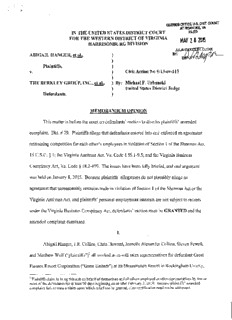
BY: / DL ABIGAIL HANGER, et al.
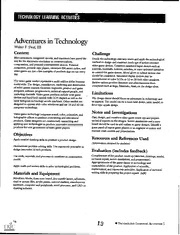
ERIC ED381386: Technology Learning Activities I.
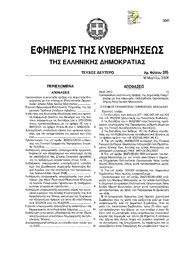
Greek Government Gazette: Part 2, 2006 no. 315
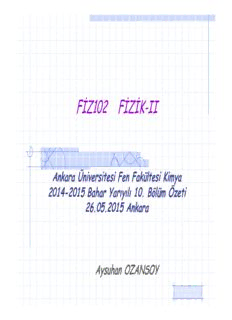
Bölüm-10-sunu
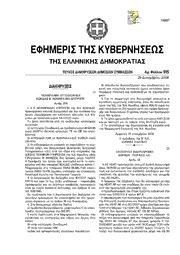
Greek Government Gazette: Part 7, 2006 no. 915
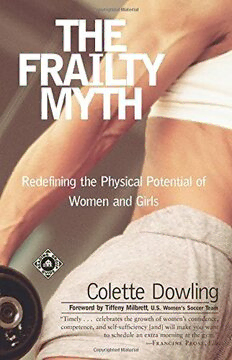
The Frailty Myth: Redefining the Physical Potential of Women and Girls
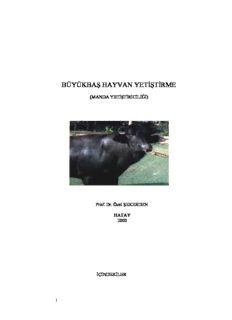
büyükbaş hayvan yetiştirme
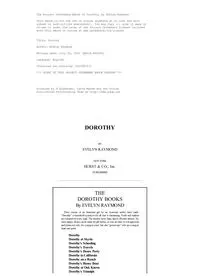
Dorothy by Evelyn Raymond
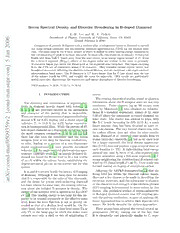
Boron Spectral Density and Disorder Broadening in B-doped Diamond
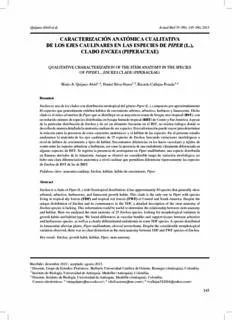
CARACTERIZACIÓN ANATÓMICA CUALITATIVA DE LOS EJES CAULINARES EN LAS ...

car-part ii - chapter 2 flight crew licensing car-fcl
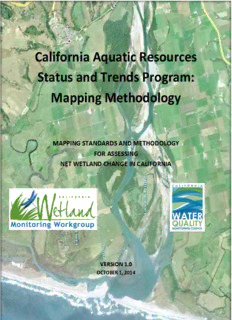
California Aquatic Resources Status and Trends Program: Mapping Methodology
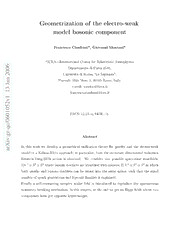
Geometrization of the electro-weak model bosonic component
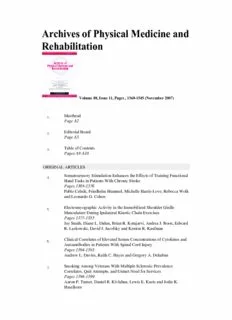
Archives of Physical Medicine and Rehabilitation

"Поэтика отражений" И. Анненского и феномен поэтического диалога в русской лирике XX века: монография
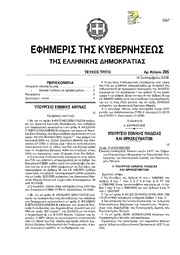
Greek Government Gazette: Part 3, 2006 no. 295
